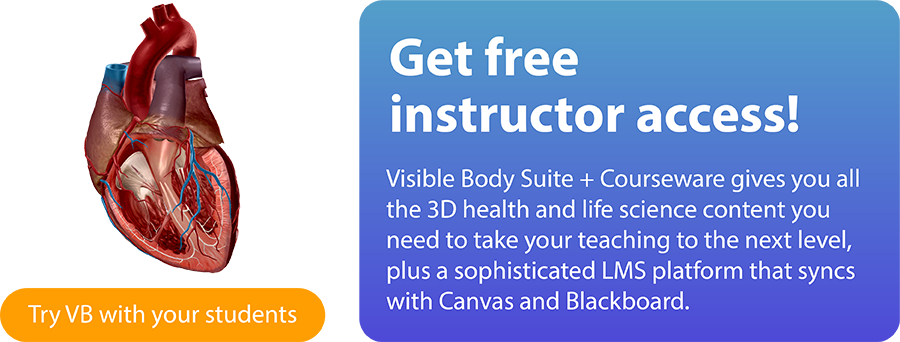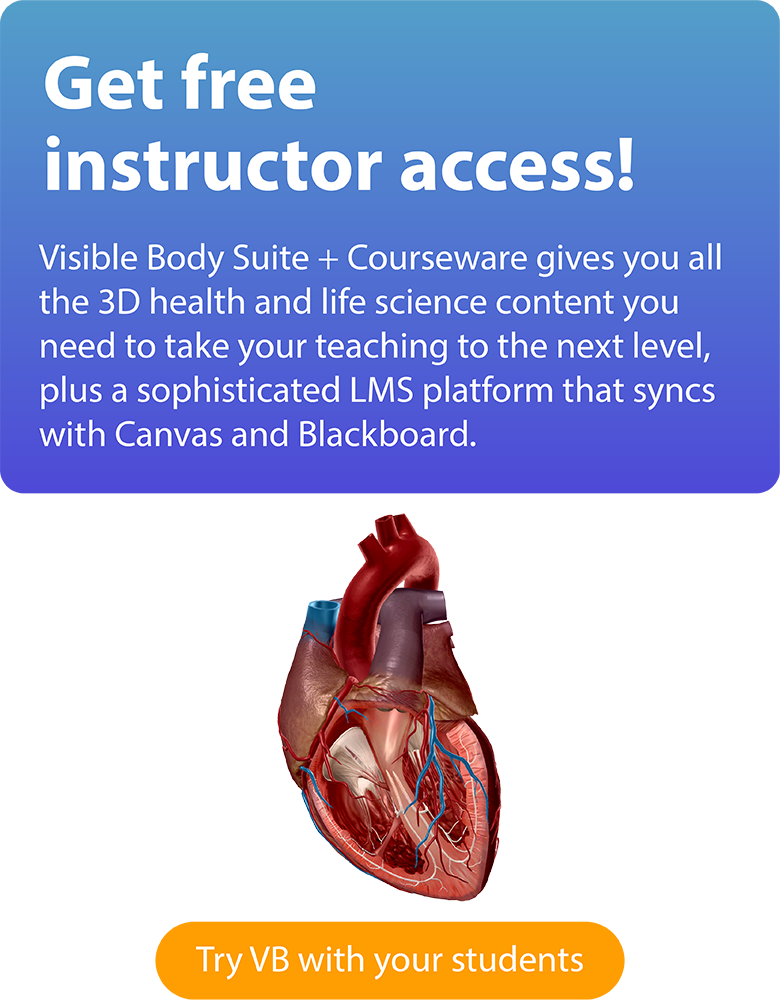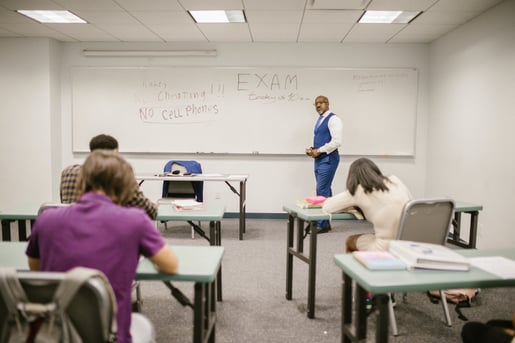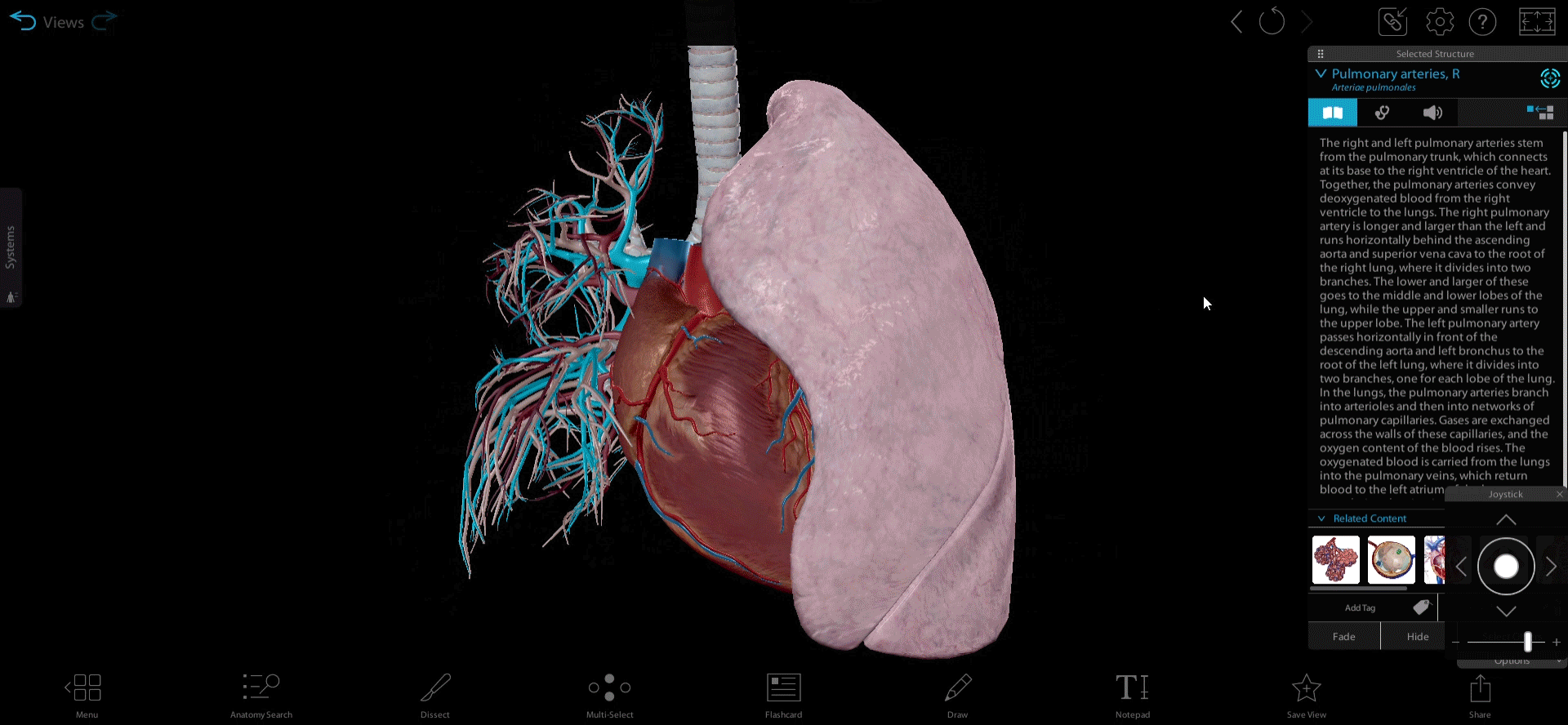Designing an Inclusive Life Sciences Class
Posted on 1/13/23 by Sarah Boudreau
What can instructors do about the several, well-documented achievement gaps in life sciences classrooms? Traditional instructional methods clearly do not support all students, but inclusive teaching may hold the key to helping all students thrive academically.


There are several groups of students who tend to underperform in STEM classes and fields, such as:
- Students from lower income families. These students tend to have higher levels of stress during assessment that can interfere with performance.
- Underrepresented minority students. Overall, Black and Hispanic students have lower degree completion rates.
- Non-male students. For example, women are overrepresented in healthcare fields but make up less than a third of the scientific workforce as a whole.
- First generation students, who don’t necessarily have the same support systems as other students.
Inclusive teaching is an equity-based teaching philosophy that centers on meeting the needs of a diverse student body, asking, “What can we do to make sure all students are engaged in the content and fully participate in the class?” Through inclusive teaching practices, instructors can create a classroom that supports all students, as the strategies that support underrepresented students also benefit others.
As Dr. Kevin Gannon says in his article “The Case for Inclusive Teaching,” inclusive teaching is “a realization that traditional pedagogical methods — traditionally applied — have not served all of our students well. It’s a commitment to put actual substance behind our cheerful declarations that all students deserve access to higher education [...] The beauty of inclusive pedagogy is that, rather than making special accommodations that would decrease equity, it actually benefits all students, not just those at whose needs it was originally aimed.”
Inclusive teaching practices involve everything from a welcoming classroom climate to effective behind the scenes course design. In this blog post, we’re going to focus on the course design elements of inclusive teaching, examining four strategies you can incorporate to support more students.
Alternative assessment
We’re all familiar with traditional assessment methods. Typically, a class has a few large, high-stakes exams or papers supplemented by a handful of smaller quizzes. Not only do big tests increase anxiety that can interfere with test performance, but traditional assessment asks students to memorize information with little regard for the higher order thinking that will help them succeed in their future academic and professional careers. More and more instructors are realizing that traditional assessment doesn’t fit their goals for their students.
 Photo by RODNAE Productions via Pexels.
Photo by RODNAE Productions via Pexels.
Alternative assessments, on the other hand, emphasize critical thinking and making connections between concepts. This includes forms of assessment like presentations and projects that can also encourage collaboration. In addition to encouraging deeper thought on the subject matter, alternative assessments deter cheating—copying test answers is easy, while copying a unique creative project is not.
When Dr. Cindy Harley of Metropolitan State University talked to the Visible Body community about how she has adopted alternative assessments in her classroom, she said that with alternative assessments, she feels that students’ grades more accurately reflect their knowledge level. Her students report that they feel more able to apply their knowledge.
Want some ideas on how to incorporate alternative assessments in your classroom? We’ve got a blog post for that!
Use diverse content
When planning a course, think about the content to which your students will read, watch, or listen. Is diversity represented in these materials?
Diversity within course materials will show students that they have a place in the class and that the discipline isn’t “just for” one particular group of people. Not only is it welcoming, but diversity within materials can be a way to tackle stereotype threat, described as the “risk of confirming negative stereotypes about an individual’s racial, ethnic, gender, or cultural group which can create high cognitive load and reduce academic focus and performance.” Extensive research has shown that when stereotypes are present, students from the stereotyped group can underperform and even disengage from the content. When students see themselves reflected in the discipline, they can feel more confident about their own academic performance.
Because many instructors do not have control over the textbooks they teach with, this can be difficult. However, you can start small. Many life sciences instructors assign video content and case study activities—consider how these can be selected to represent diversity.
Increase structure
Not all students enter class with finely-tuned study and time management skills. Structure can guide students through the learning process and illustrate good study practices.
Let’s look at this paper on structure and achievement gaps in the college biology classroom. The authors introduced a moderate structure to what was once a low structure course with a traditional lecture, few preparatory assignments, and few practice exam problems. They added in preparatory homework and ungraded guided reading questions, and they developed in-class activities, going from very few activities to about a third of class time dedicated to them. The activities were based on the guided reading questions, tying concepts together.
The paper looked at the same approach with two different instructors at two different universities. The class’s exam performance increased by 3.2%—Black students’ grades improved by 3.1% on top of that, and first-generation students’ grades increased by 2.5% relative to continuing-generation students. The failure rate also dropped. Combined with survey results, the data indicates that for these groups of students, additional structure can help close the achievement gap.
Differentiate
This is a topic we’ve talked about on the blog before in “Reach More Students: Differentiated Instruction with Visible Body,” which contains several ideas for differentiating instruction in the biology and A&P classroom.
Differentiated instruction gives students options for learning, often incorporating multiple modalities, in order to reach more students. A class’s content, process, and product can all be differentiated.
Content refers to the skills, knowledge, and material taught in a class and how the student acquires the information. An instructor can offer multiple ways to engage with the content, like watching a video, listening to a podcast, or using interactive tools to learn.
 Interactive 3D learning with Visible Body Suite.
Interactive 3D learning with Visible Body Suite.
Process refers to how a student processes that information. Both in-class activities and homework can be differentiated, offering students several different ways to make sense of and contextualize what they’ve learned.
Product refers to how a student shows what they’ve learned. We’ve talked previously in this blog post about how traditional exams can be counterproductive, and providing alternatives can give students an opportunity to shine.
Conclusion
Traditional teaching practices preserve a status quo where there are significant achievement gaps in the science classroom. To ensure that all students connect with the material, there are several steps instructors can take to create a more inclusive class.
In this blog post, we’ve only hit the tip of the iceberg when it comes to inclusive teaching. Here are some more resources to explore:
- This inclusive teaching practices toolkit from the Association of College and University Educators incorporates bite-size videos.
- The “How to Make Your Teaching More Inclusive” advice guide is full of practical tips and even has a section for common questions.
- Accessible Syllabus is a resource that walks instructors through syllabus practices that “promote student engagement and agency.”
- The Center for New Designs in Learning and Scholarship at Georgetown University has an inclusive teaching toolkit — check out the sections on classroom climate and power.
Check out more classroom focused posts on the Visible Body Blog:
- Can Augmented Reality Improve the Learning Experience of Future Healthcare Professionals?
- How Visible Body Supports Executive Function Skills
- What Instructors and Administrators Need to Know About Mobile Learning (M-Learning)
Be sure to subscribe to the Visible Body Blog for more awesomeness!
Are you an instructor? We have award-winning 3D products and resources for your anatomy and physiology or biology course! Learn more here.



